

Andrew Maclean
Honda CR-V RS e:HEV vs Toyota RAV4 Edge Hybrid: Spec battle
5 Days Ago

Journalist
With the controversially-styled Mazda MX-30 now available Down Under in hybrid and all-electric guises, now is a good time to take a look back at the MX sub-brand’s 40-year history.
There are three rough parts to the Mazda’s MX story, and this article.
It begins with a wave of out-there concept vehicles during the early- to mid-1980s, followed by a surge of sporty production vehicles beginning in 1987.
More recently the MX name has also been used for a slew of concepts that have served as teasers for upcoming production vehicles.
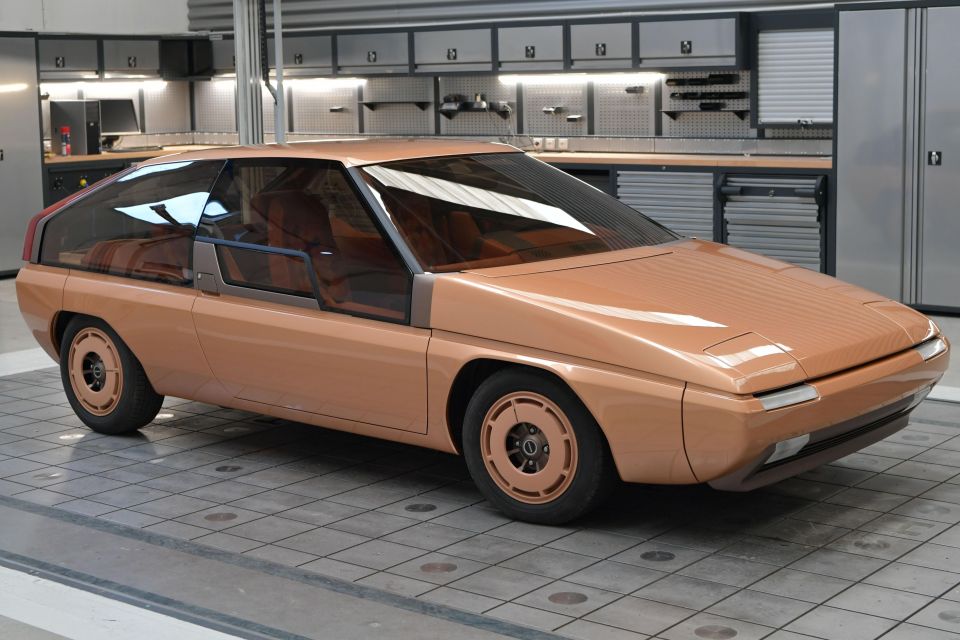

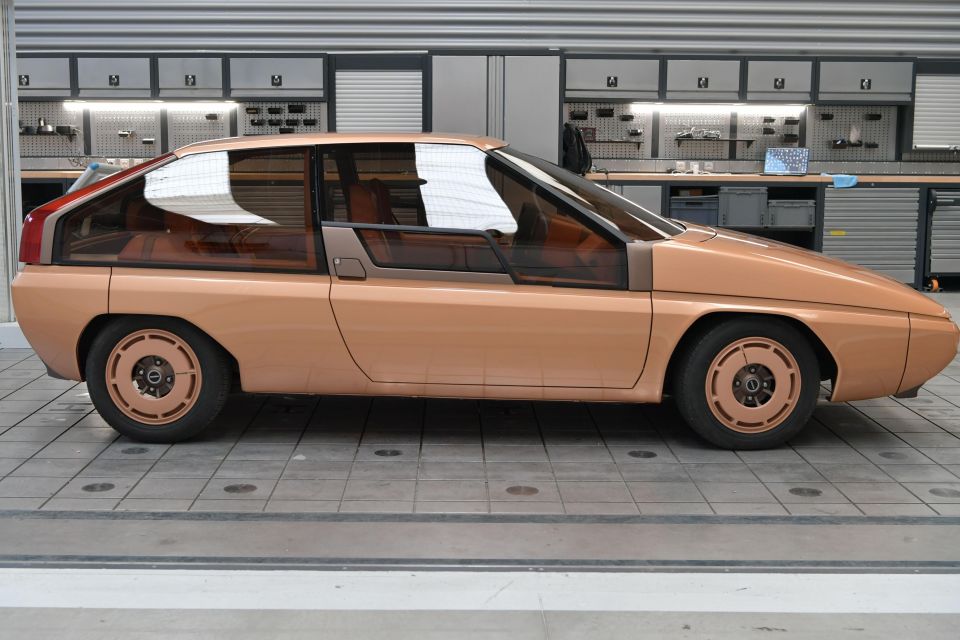
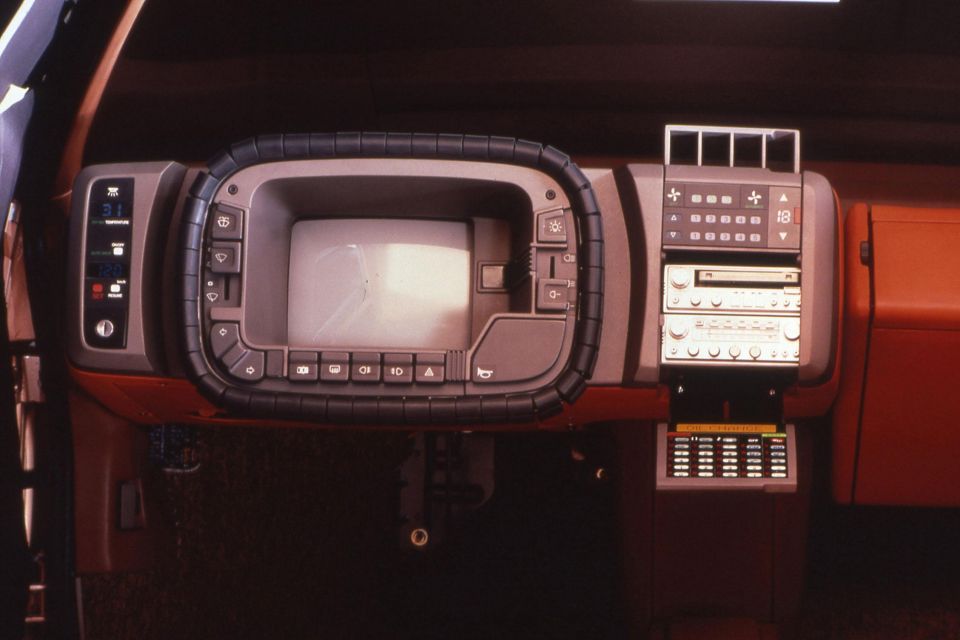
Short for “Mazda eXperimental”, the MX name was first used in 1981 for an out-there concept styled by Italian design house Bertone.
Debuted at the Tokyo motor show, the MX-81 Aria was based on the contemporary 323, but had a wedge-shaped body designed by Marc Dechamps with a wedge-shaped body and large glasshouse.
It had a low 0.29 coefficient of drag, and was powered by a 1.5-litre engine with 97kW and 186Nm.
Measuring 3940mm long, 1690mm wide, 1280mm tall, and sitting on a 2635mm wheelbase, the MX-81 Aria is tiny by modern standards.
The interior featured a recessed square steering wheel with a TV screen in its centre, and front seats that swung to the side.
While the MX-81 Aria never made it into production, some elements, like the shape of the pop-up headlights and high-mounted tail-lights did end up on some production vehicles.
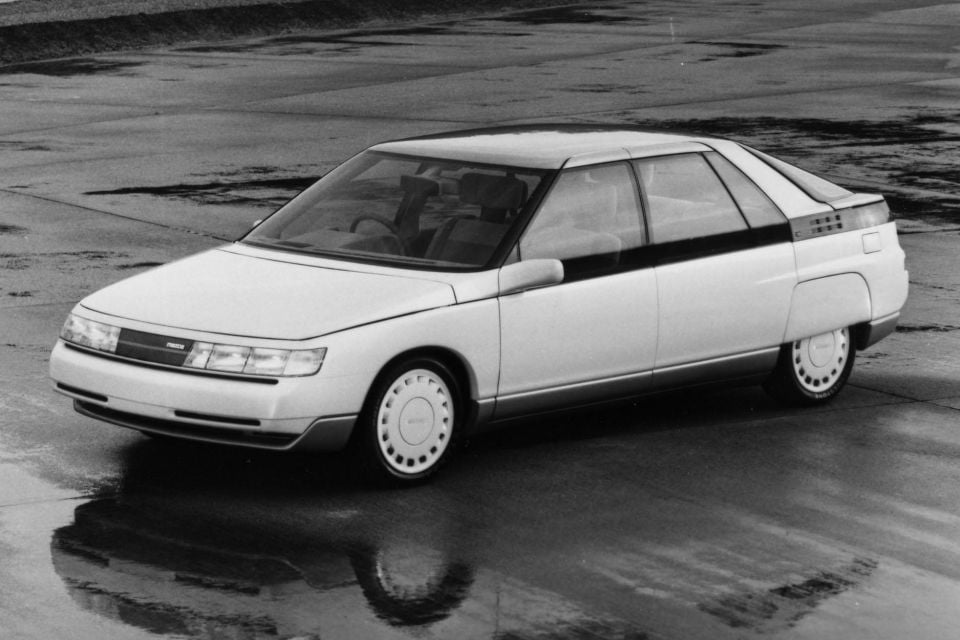

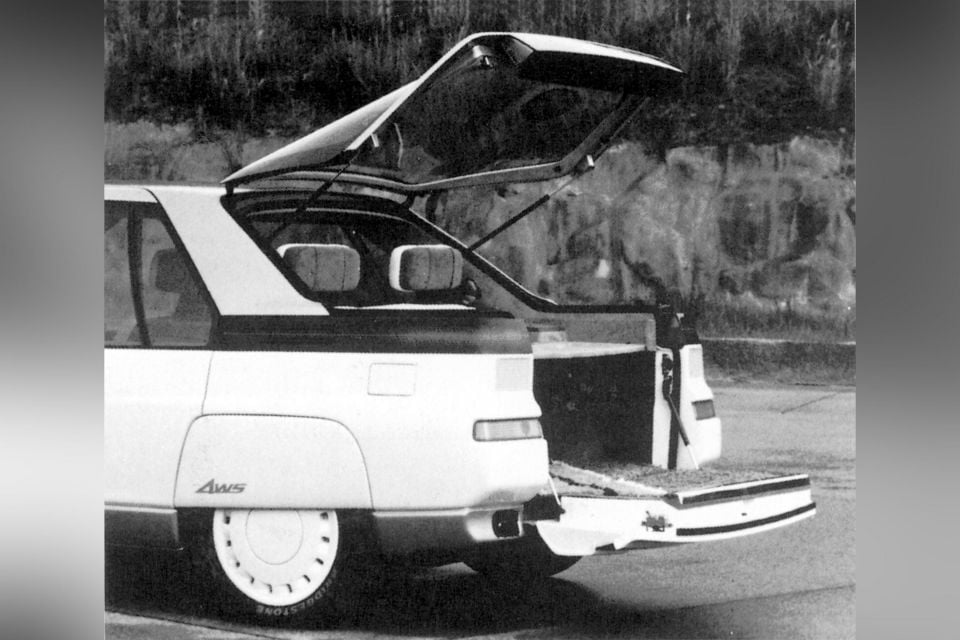
For the next Tokyo show, Mazda brought out a more practical show car. Its flat sides, grille-free front, slight intakes, flush-fitting windows, and invisible door handles no doubt made the MX-02 slippery through the air.
Tech highlights included all-wheel steering, something that became all-the-rage among Japanese automakers during the 1980s and 1990s, and a head-up display.
The car rides on a surprisingly low-profile tyres for the era, and also features a two-piece tailgate, with the upper section rising up as per normal and the lower section folding down like a ute’s.
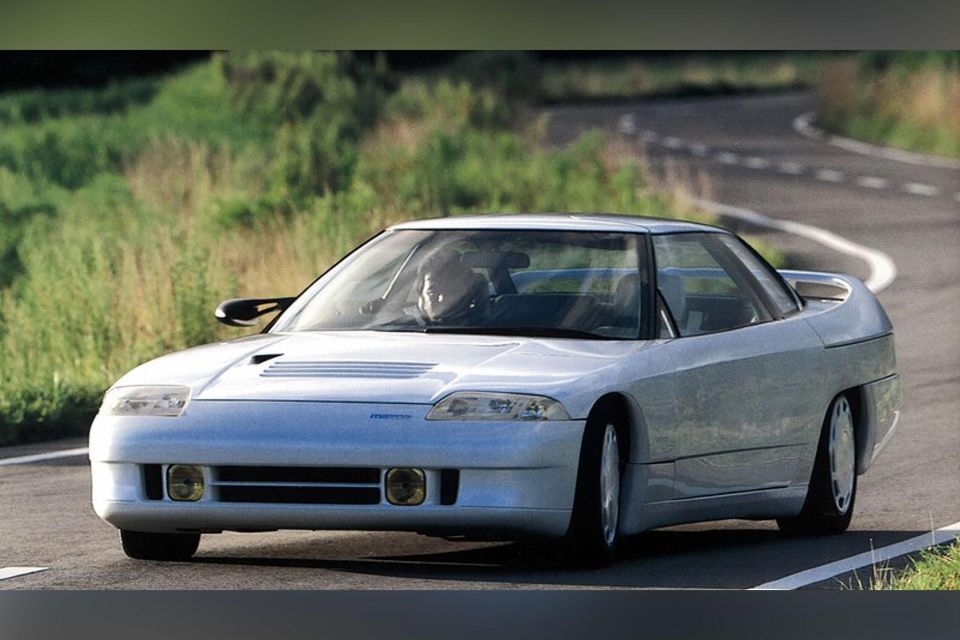
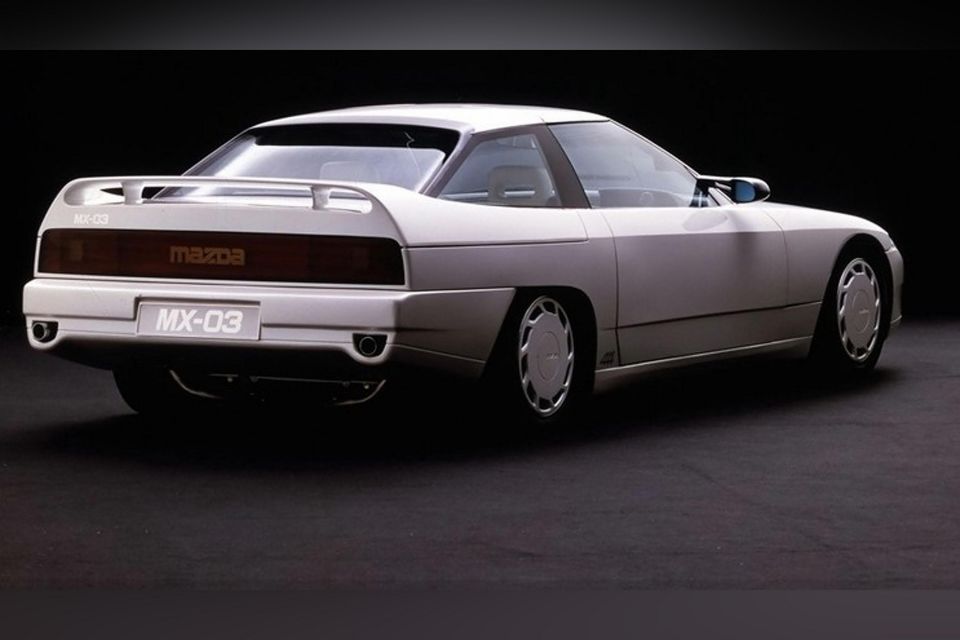
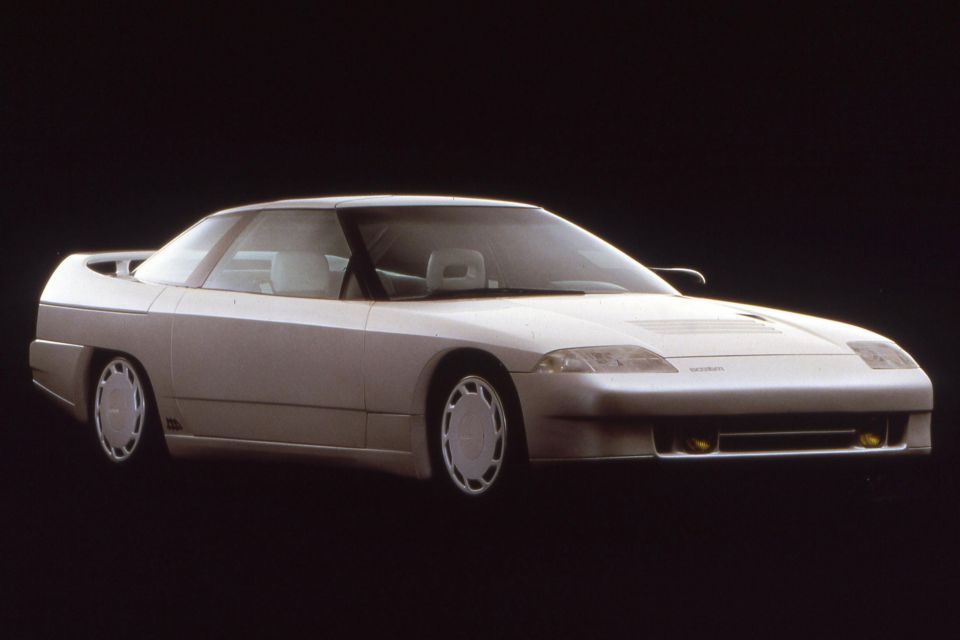
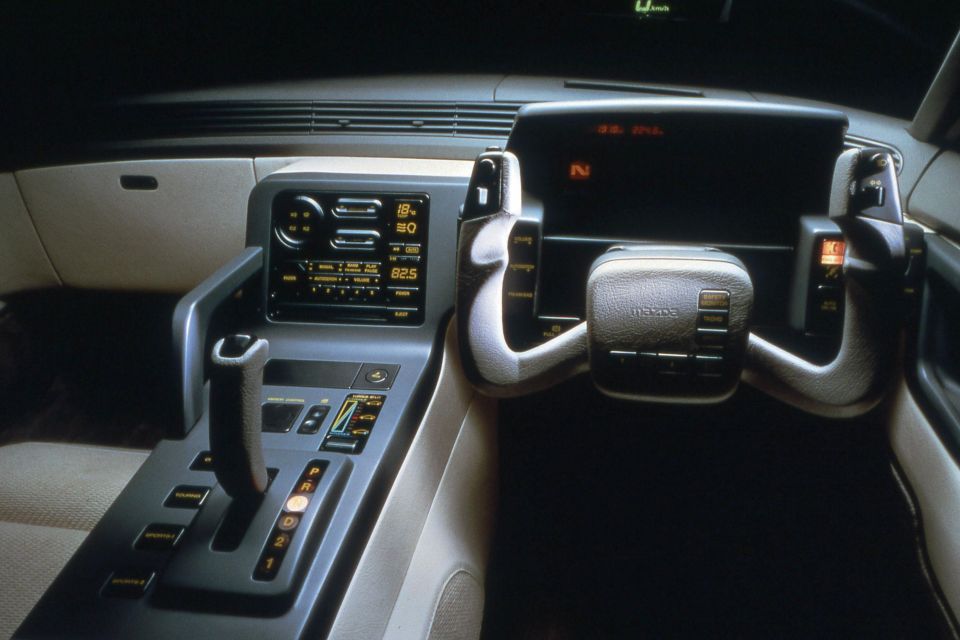
At the subsequent Tokyo motor show, Mazda swung back to a two-door model for the MX line.
Like the earlier MX cars, the MX-03’s body was optimised for maximum slipperiness. The smooth styling and flush windows helped the MX-03 to a coefficient of drag of just 0.25.
All-wheel drive helped the 232kW triple-rotor engine get its power to the ground efficiently, while the all-wheel steering system was designed to make the car feel more nimble.
The MX-03’s cabin, with its yoke-style steering wheel and profusion of screens wouldn’t look too out of place on a motor show stand today.
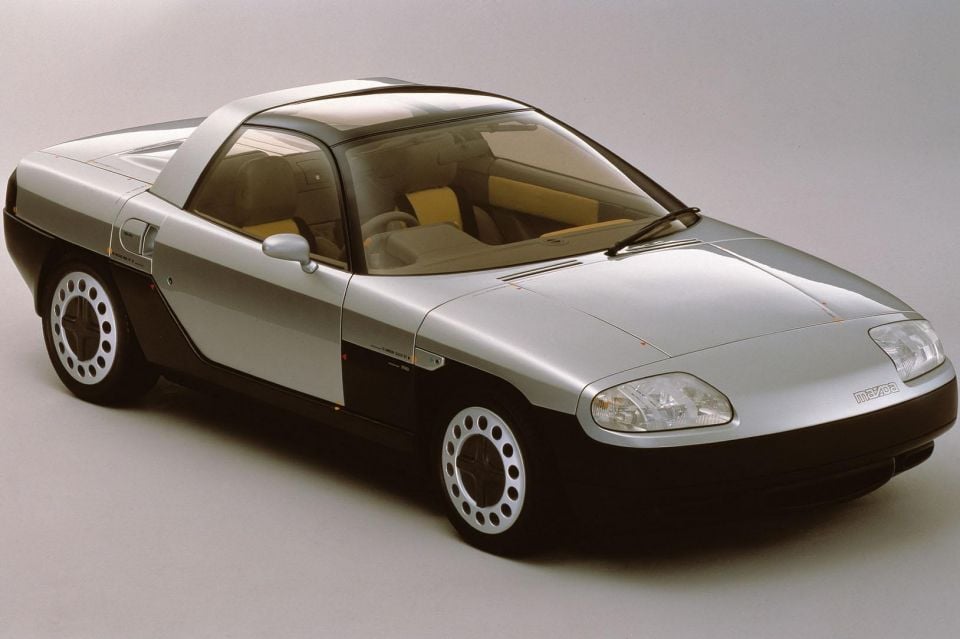
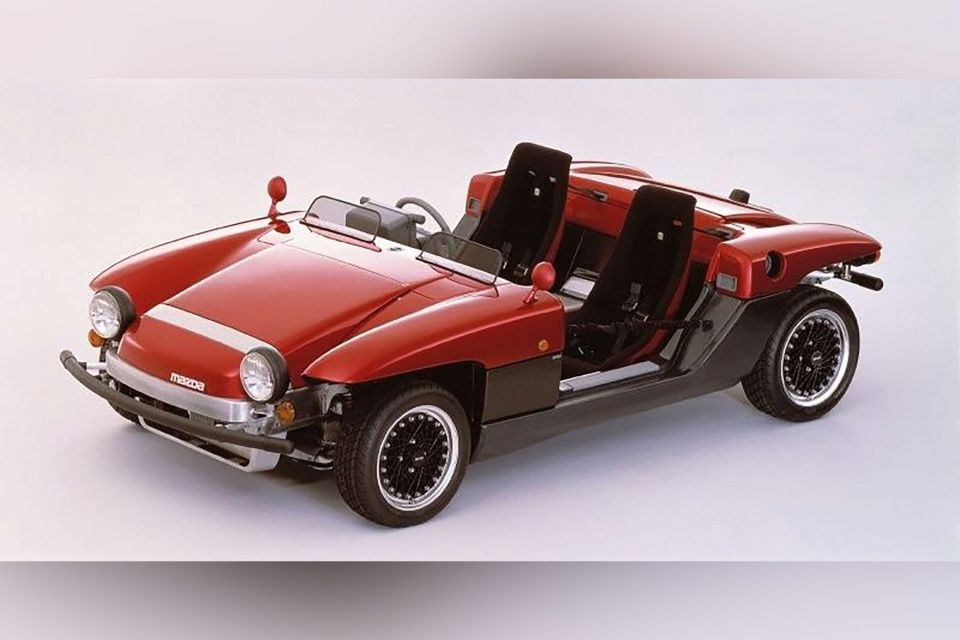
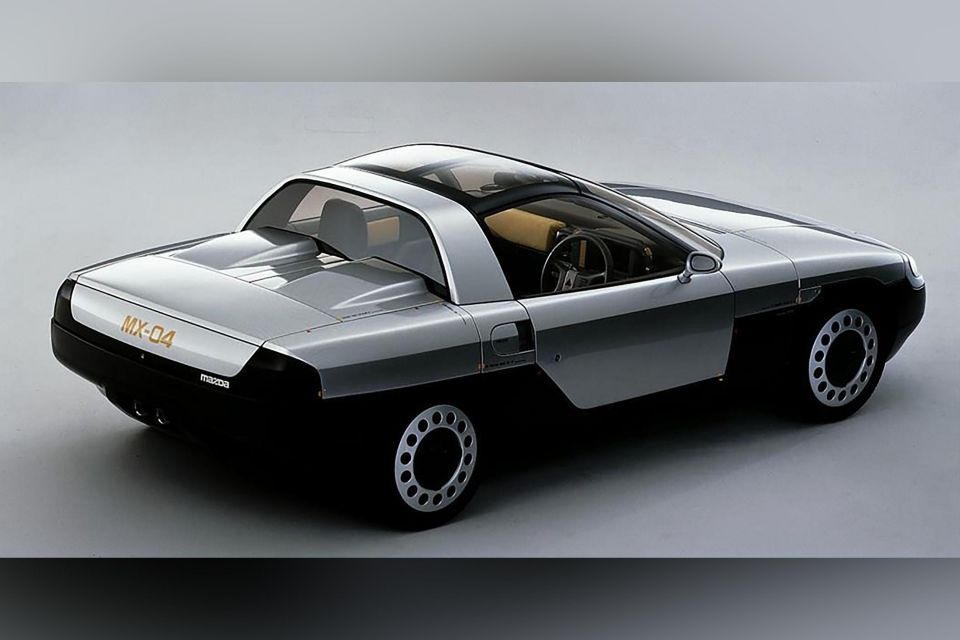
With its front engine, rear-drive chassis, the MX-04 may have been a clue about the still-secret MX-5 project.
Thanks to its removable fibreglass panels, the MX-04 could transform from a door-less roadster with a beach buggy aesthetic to a closed-roof coupe with a long, flat rear deck, and potentially anything in between.
Unlike the MX-5, the MX-04 was powered by a rotary engine.

This vehicle doesn’t fit neatly into the three main sections, but best belongs here.
After the rotary-powered 787B won the 1991 24 Hours of Le Mans, rule changes effectively banned rotary engines. Mazda scrambled to come up with an entry for the 1992 World Sportscar Championship as its racing program was built entirely around rotaries.
With Jaguar leaving racing, Mazda took the TWR-designed XJR-14 from the 1991 season and fitted it with 3.5-litre Judd V10.
Thanks to the end of Japan’s bubble economy, Mazda didn’t have the funds to ensure the MXR-01 matched the success of its predecessor.
The World Sportscar Championship folded at the end of 1992, and so ended Mazda’s tilt at high-end racing in Europe.
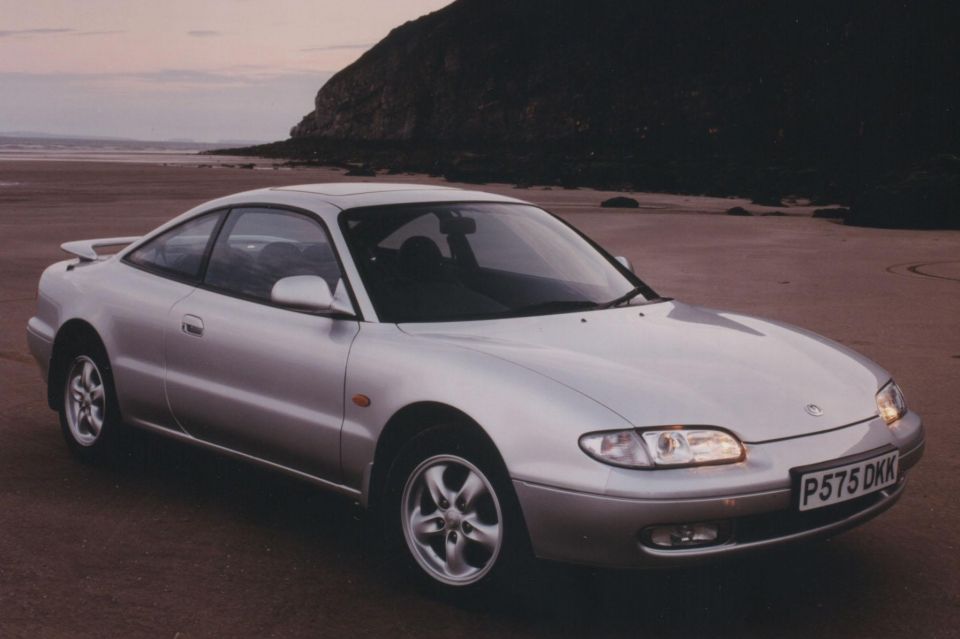
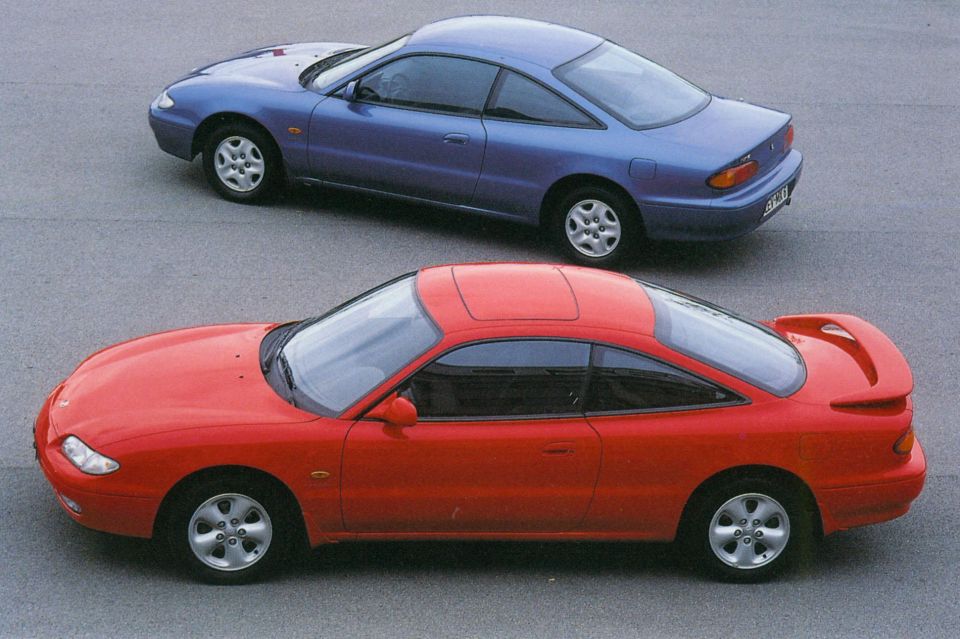

Based on the second-generation front-wheel drive 626 range, the original MX-6 had completely unique sheet metal that was handsome, but hardly as experimental as the preceding show cars with the MX badge.
That said, the first-generation MX-6 was available with a 2.2-litre turbo, as well as four-wheel steering.
Like its platform mate, the MX-6 grew longer and wider in 1991. While it too adopted rounder and softer lines, the MX-6 was less jellybean and more like a pancake with a thick cut of butter on top.
While all-wheel steering was still available, the four-cylinder turbo was dumped as the high-line engine, replaced by 2.5-litre V6.
A smaller 2.0-litre V6 was also available, as was a 2.0-litre four-cylinder.
Both generations of the MX-6 were also restyled by Ford for its unfortunately-named Probe coupe.
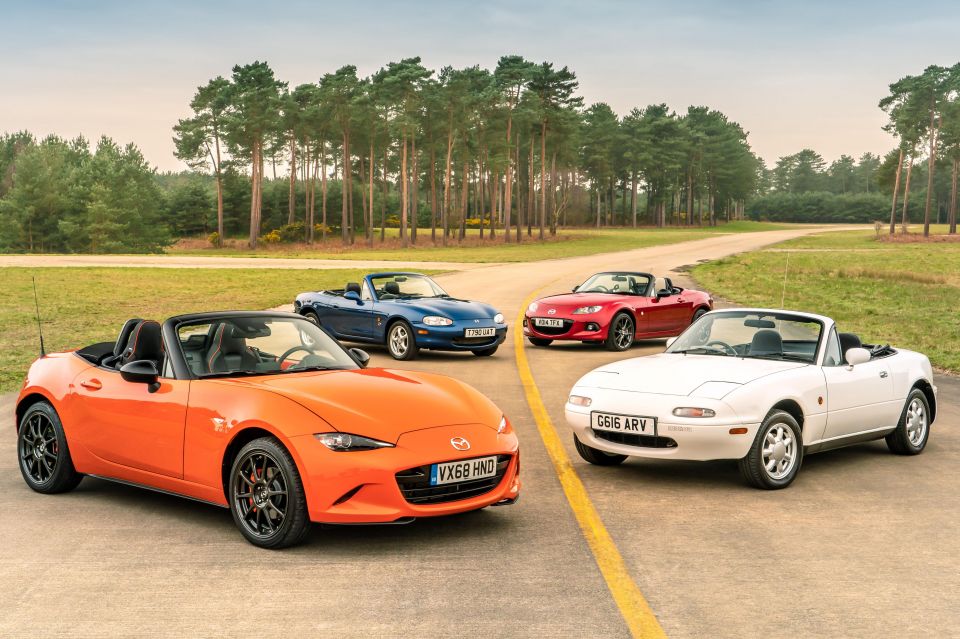
Championed by journalist-turned-product-planner-turned-journalist Bob Hall, the MX-5 revived the classic British roadster formula and added some Japanese twists.
Unveiled at the 1989 Chicago auto show, the MX-5 – known as the Miata in the USA and Roadster in Japan – was a sell-out smash hit.
Over the course of four generations, the MX-5 has become the world’s best-selling roadster, with more than 1.1 million sold over its lifetime.
For much of this period it has stayed true to the original premise with a front-engine, rear-drive layout, a relatively lightweight convertible body, and a four-cylinder engine with just enough power.
There have been detours along the way, including the Australian-developed second-generation Turbo, the folding hardtop of the third-generation, and RF folding targa top in the current car.
With its focus on affordability, fun and simplicity, the MX-5 has seen off a raft of similarly-sized competitors, from the MGF and Ford Capri to the Mercedes-Benz SLK.
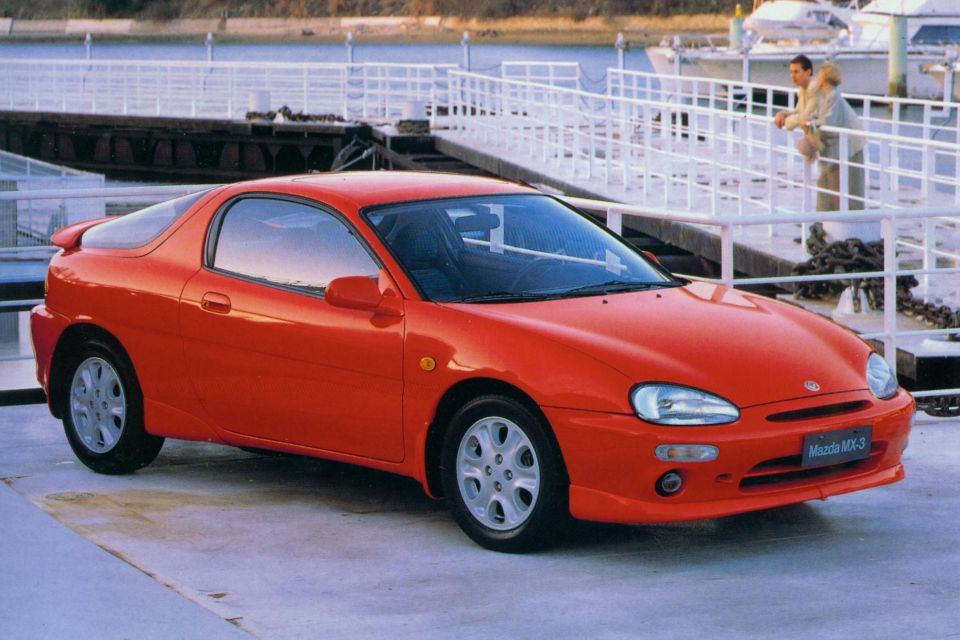
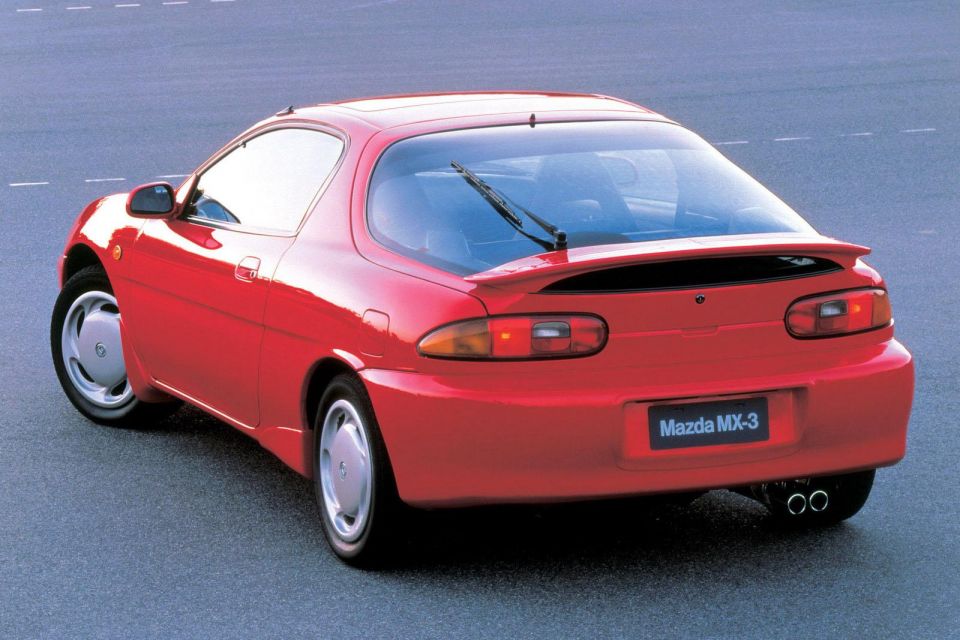
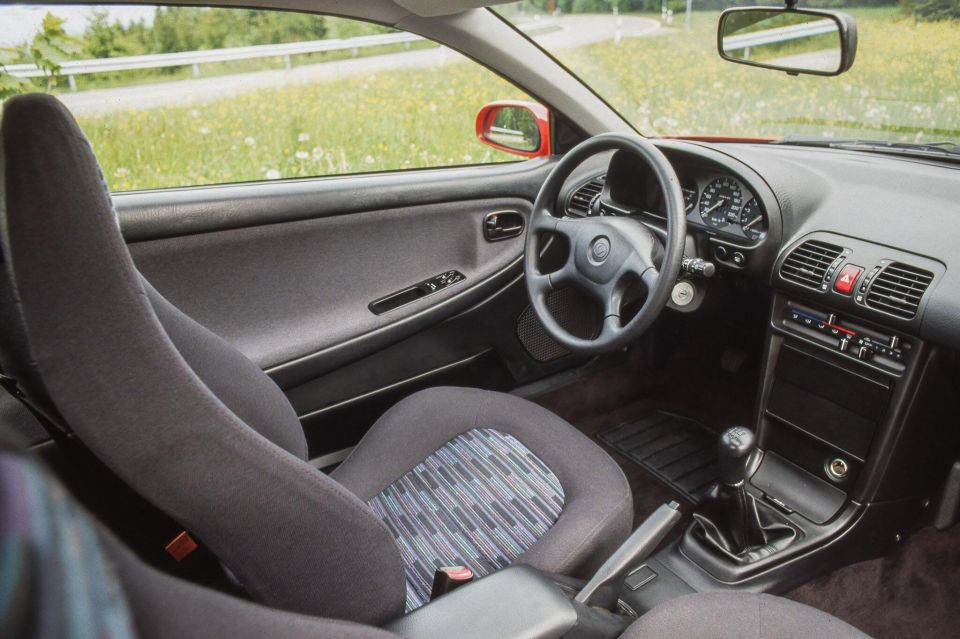
Launched at the height of Japan’s bubble economy, the MX-3 seemingly had a different name for each market it was sold in.
In Australia it was the Eunos 30X – and later the Mazda Eunos 30X – but in Europe and the USA it was the Mazda MX-3.
At home, it was sold as the Eunos Presso and Autozam AZ-3. When Mazda’s multi-brand strategy was axed, it became the Mazda AZ-3.
Its distinctive three-door hatchback body hid 323 underpinnings.
In addition to a selection of four-cylinder engines, it was also offered with what’s claimed to be the “world’s smallest mass-produced V6 engine”: a 97kW/156Nm 1.8-litre V6.
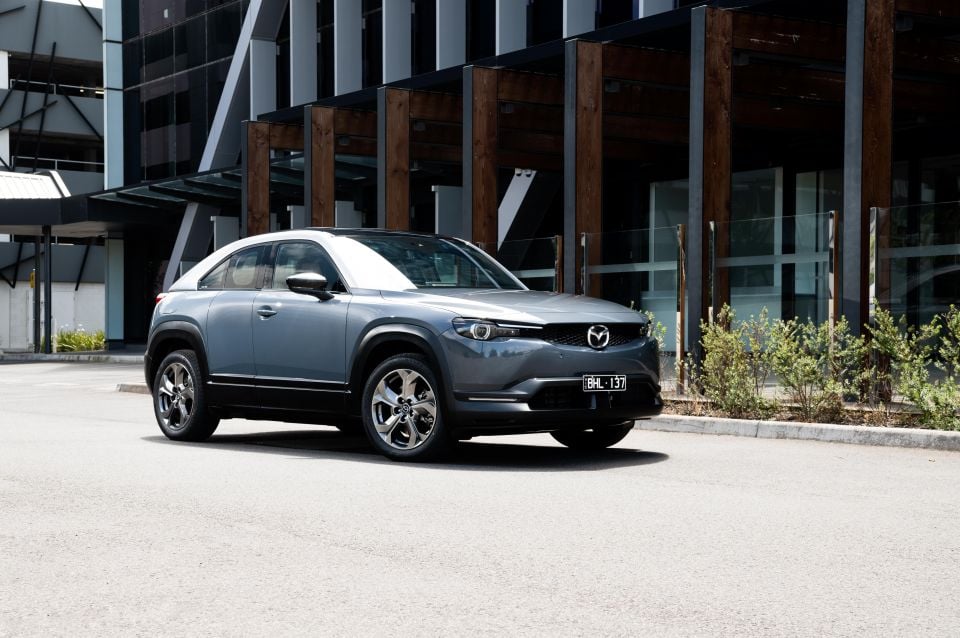
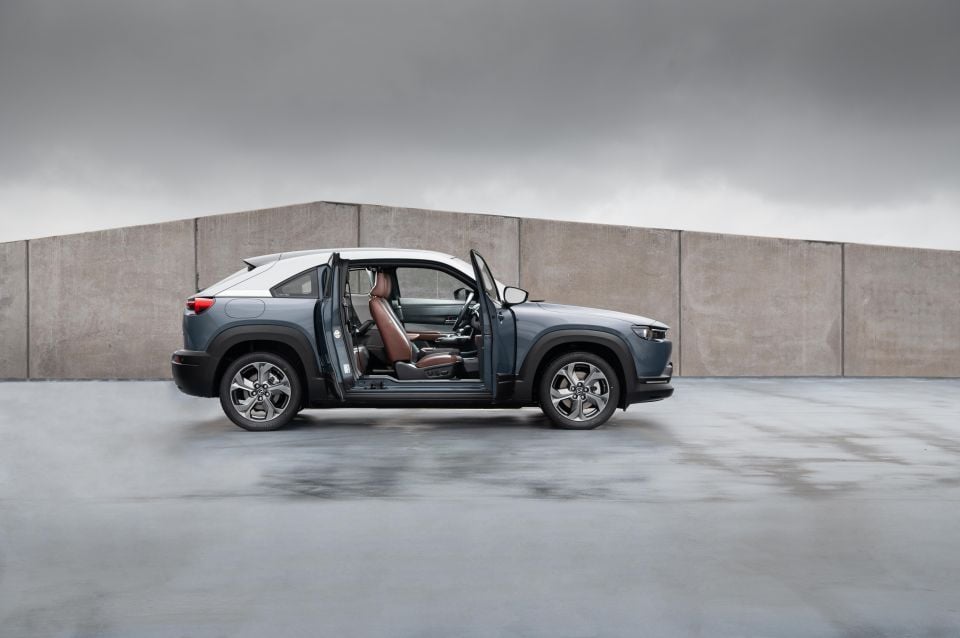
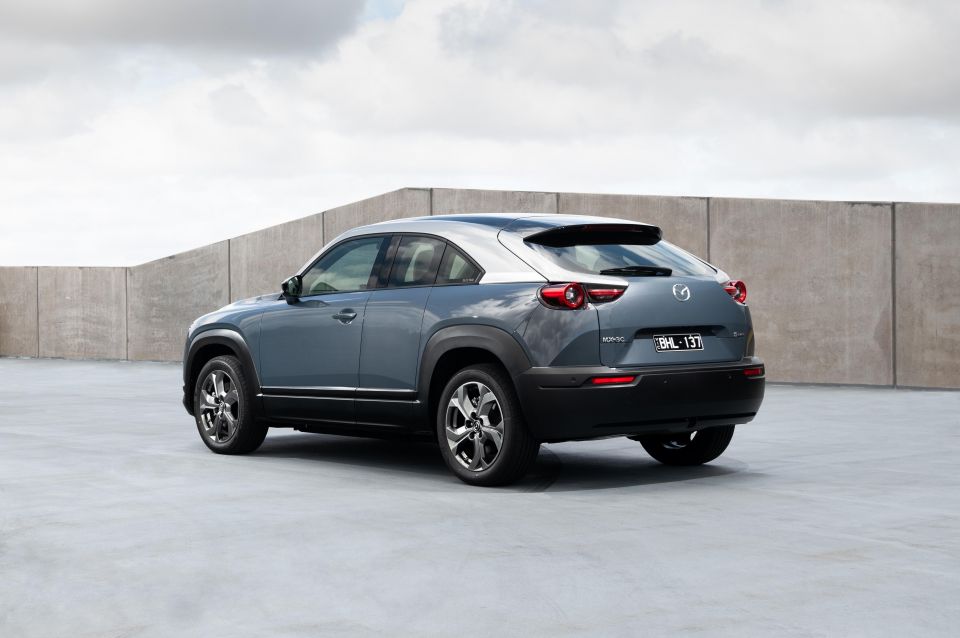
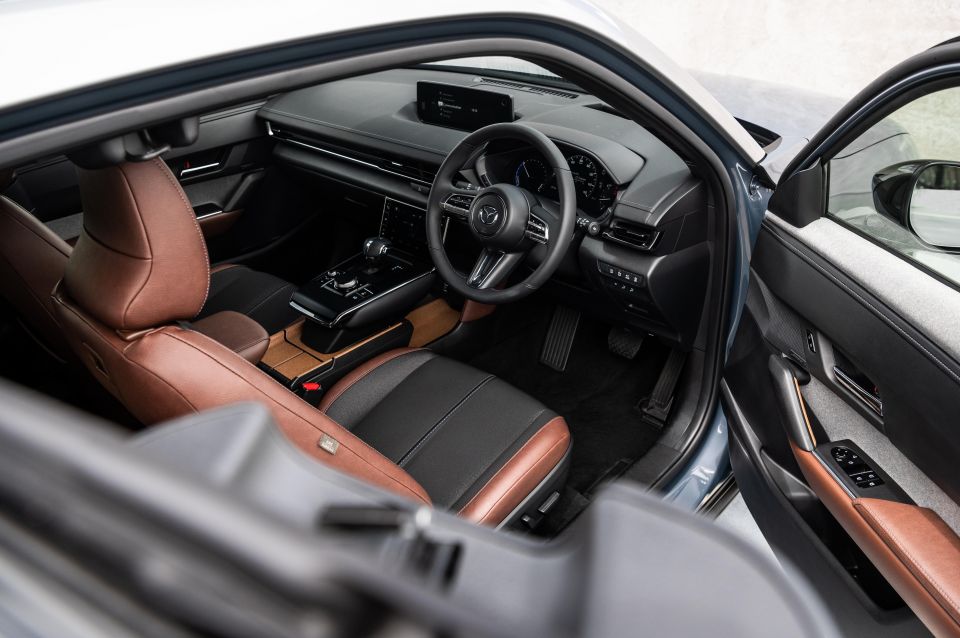
It was only a matter of time before the MX badge was applied to a production crossover. While purists may decry sullying the MX badge with a high-riding vehicle, the MX-30 at least stays true to the “experimental” part of its name.
With its quirky crossover coupe body, limited 200km range, and high pricing, the MX-30 Electric will likely be a rare sight on Australian roads. A more affordable mild hybrid model will make up the bulk of sales.
A range-extended model featuring a rotary engine to recharge the battery pack has been delayed, and reports indicate it may even be cancelled altogether.
Regardless of its sales success, the MX-30 is Mazda’s first cautious step into the world of electric cars.
In June this year the company announced a cohesive electrification strategy which see it develop a dedicated EV platform, and launch 13 hybrid, PHEV and electric models over the next few years.
Starting in the 2000s, Mazda began producing concept cars previewing upcoming new cars under the MX name.
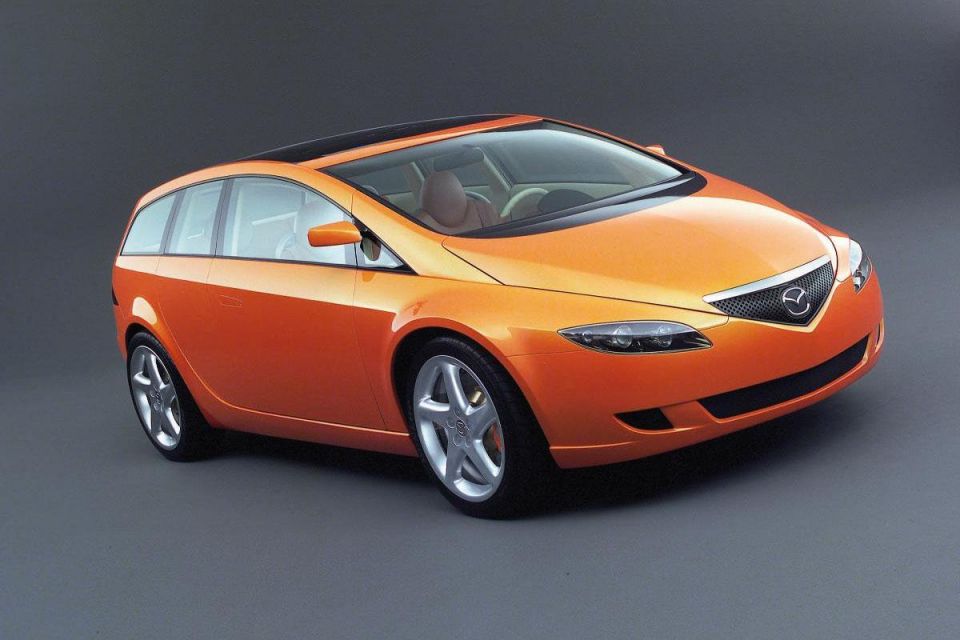
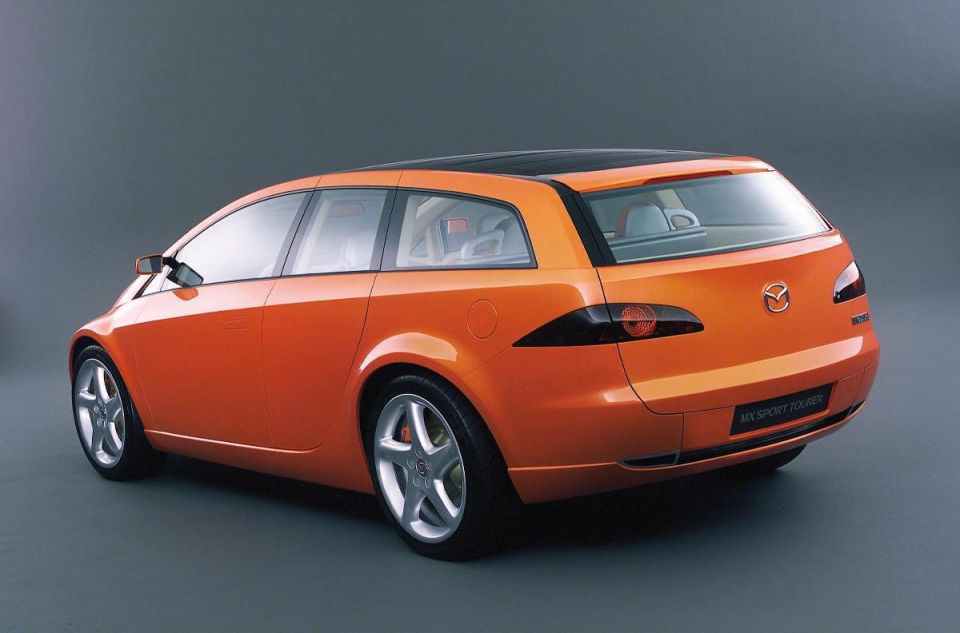
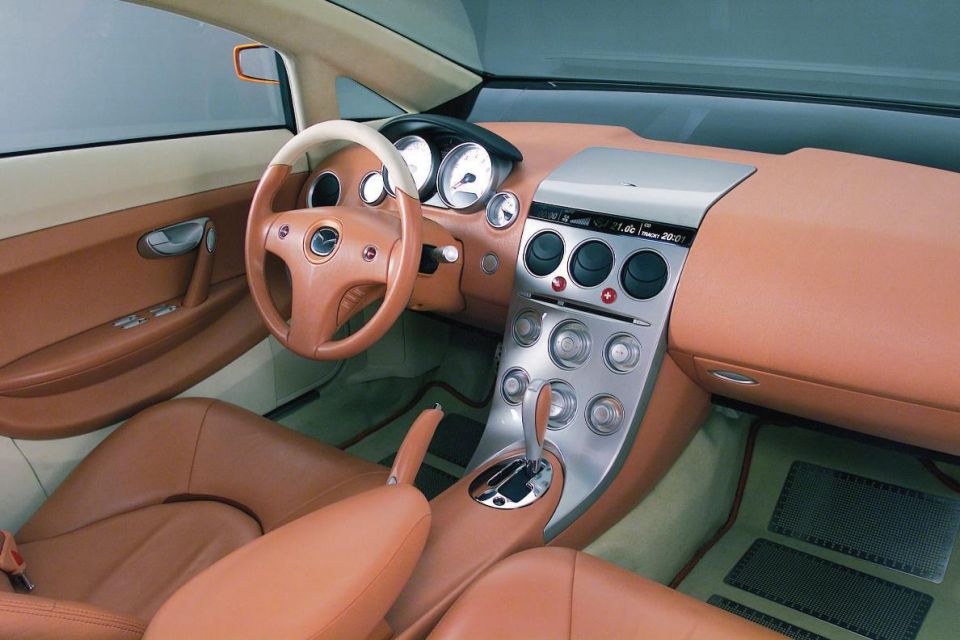

While the 2001 MX-Sport Tourer concept never directly morphed into a production vehicle, it served as a teaser of Mazda’s new styling direction after half-a-decade in the design doldrums.
The car’s overall shape, much of the interior and some of its styling details ended up on the first-generation Mazda 6 range, which went into production in 2002.
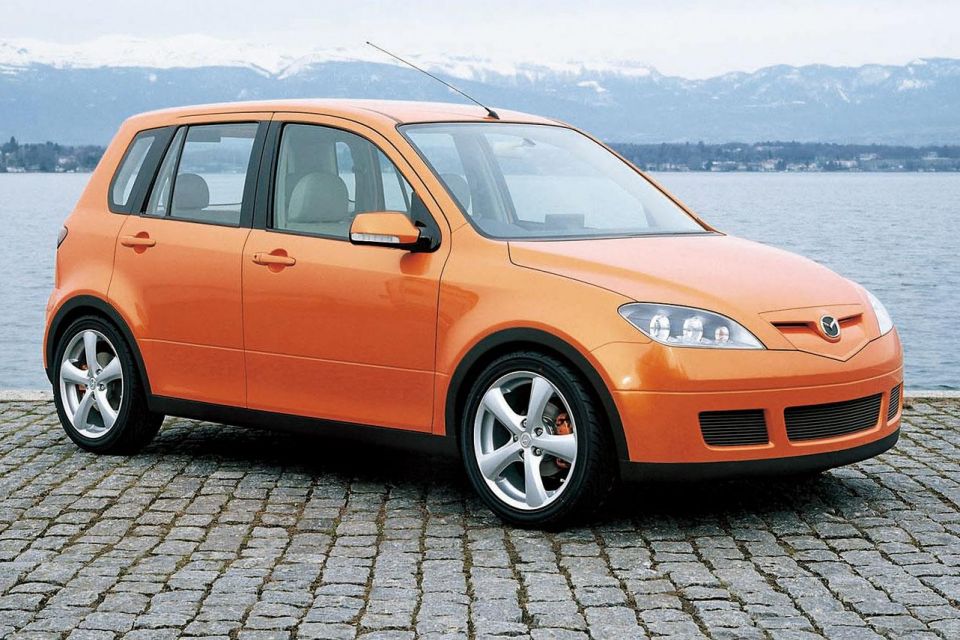
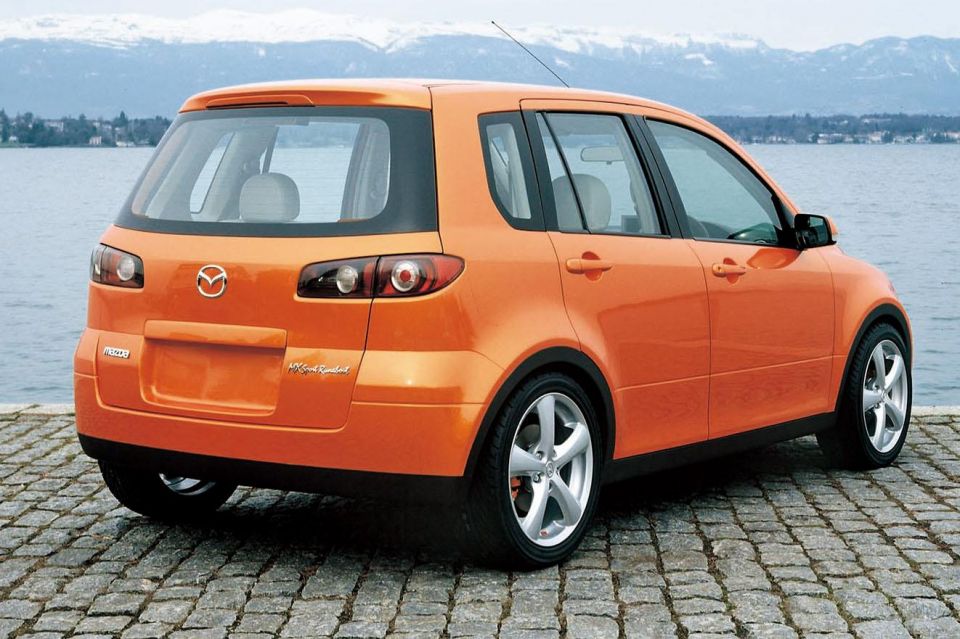
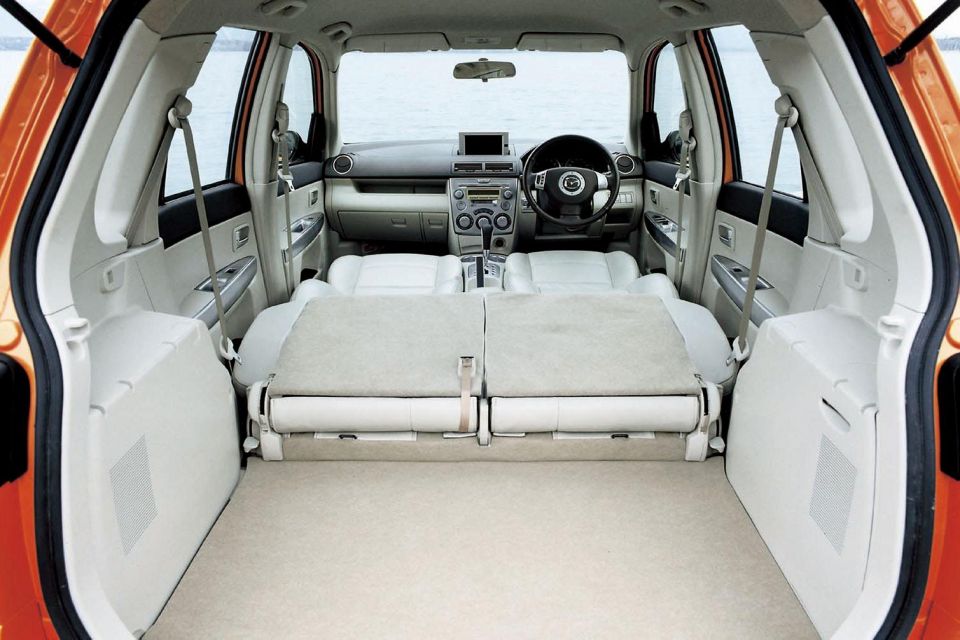
While the 2002 MX-Sport Runabout (above) was a tall-body hatch like the 121 Demio, its design was significantly more pleasing to the eye.
Little changed when it started rolling off the production line as the first-generation Mazda 2 later that year.
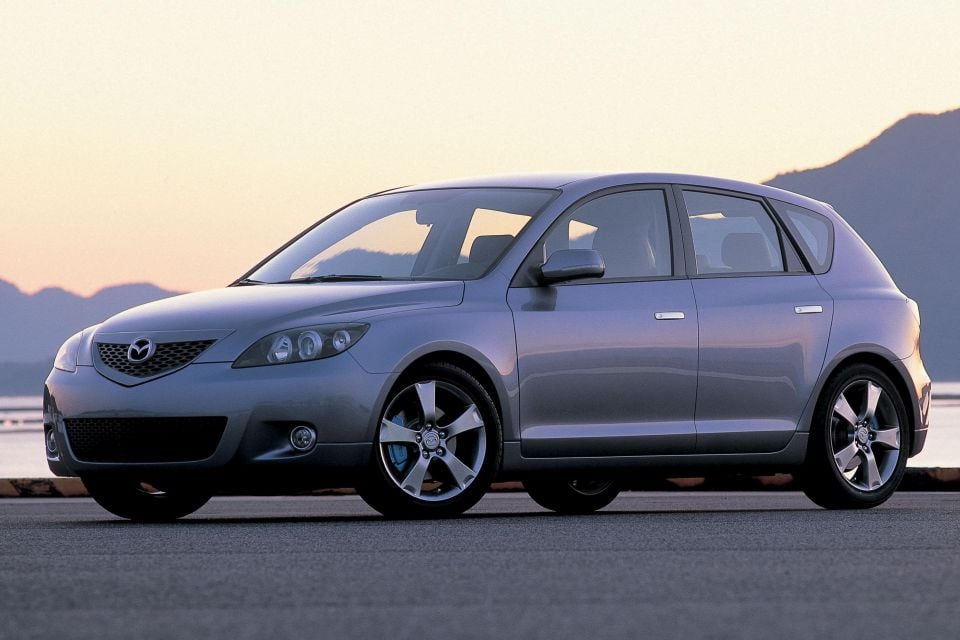
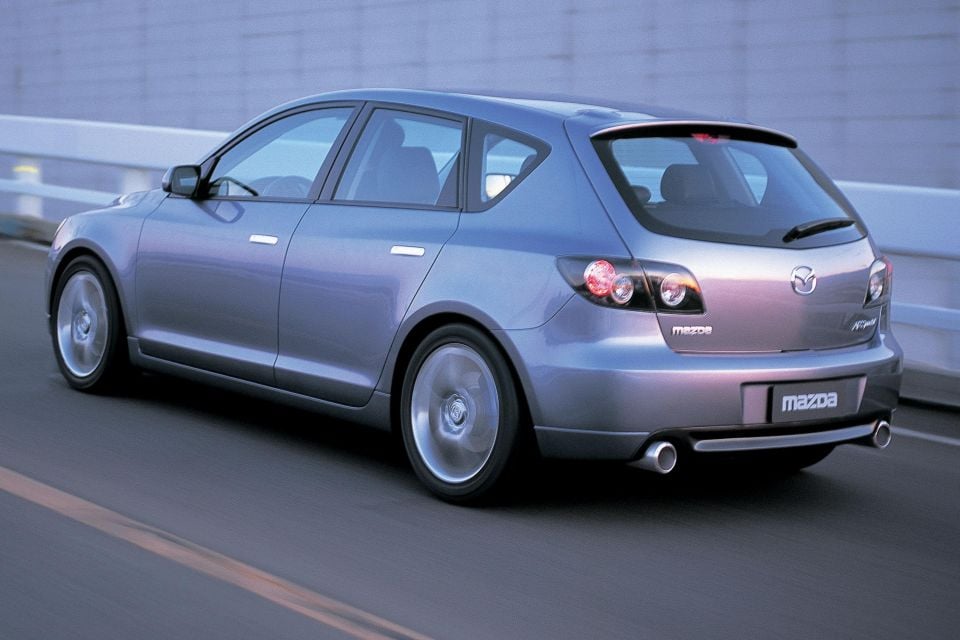
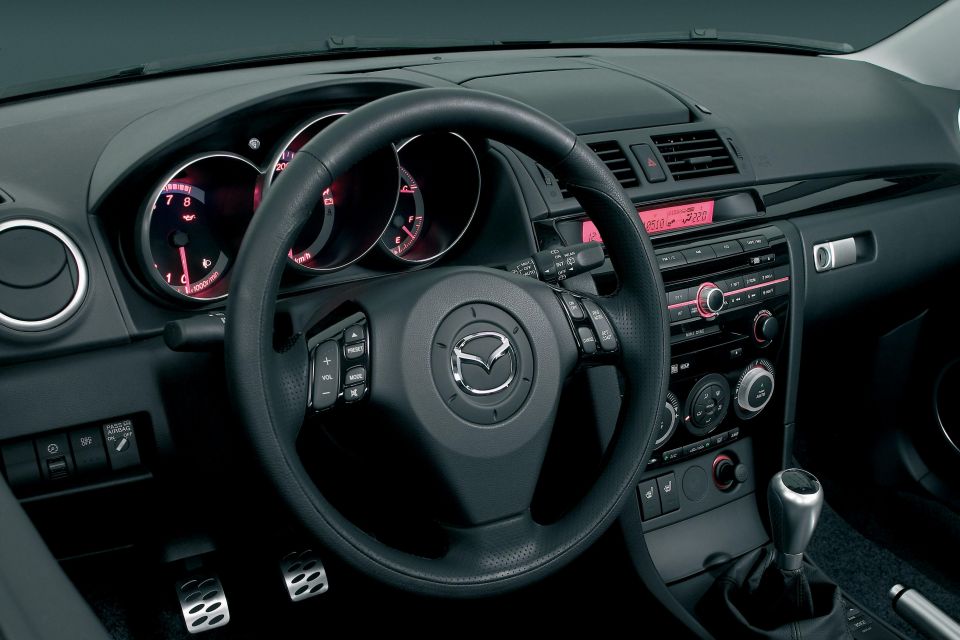
The rejuvenation of Mazda’s core range was nearly complete when the 2003 MX-Sportif was unveiled.
Flush-fitting door handles aside, it was almost a dead-ringer for the new Mazda 3 hatch, chunky tail and all.
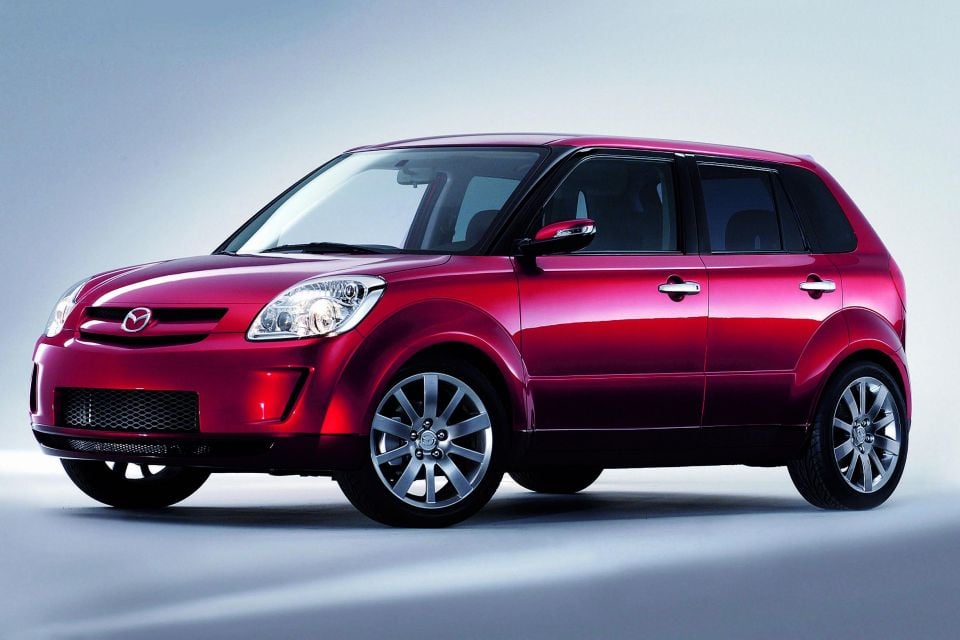
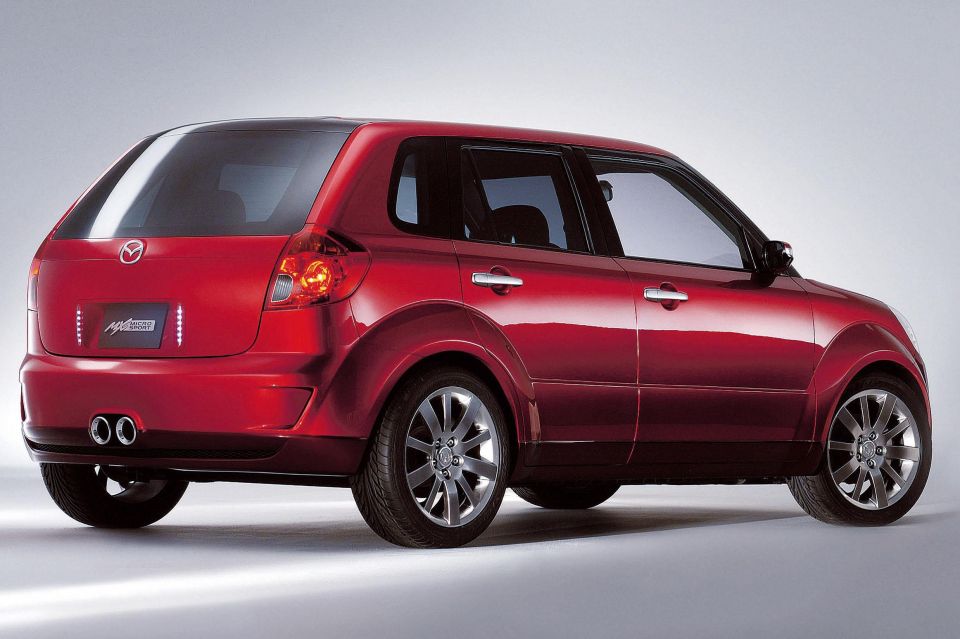
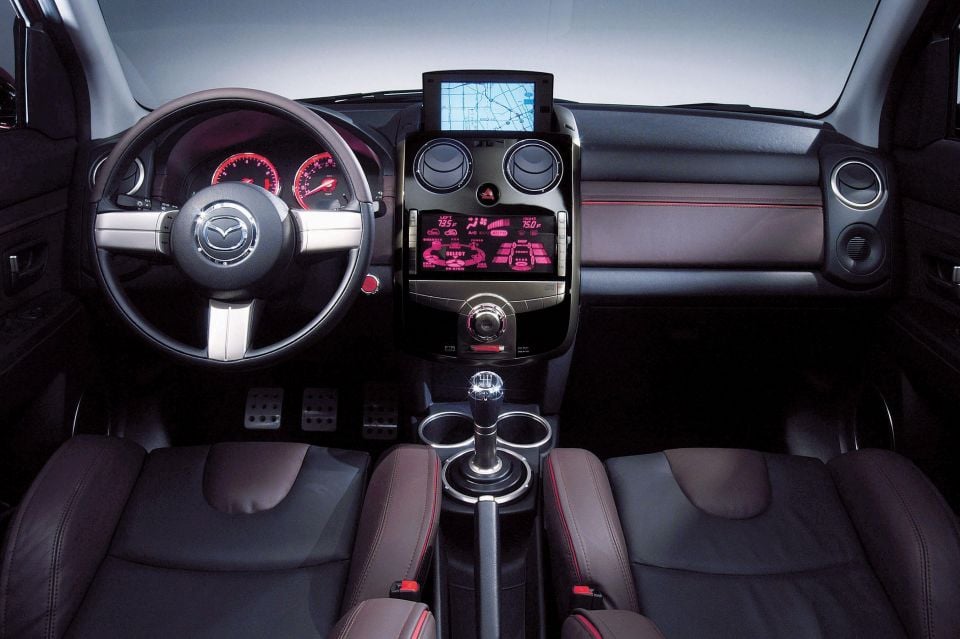
The 2004 MX-MicroSport concept went into production later that year with toned-down flares and fascias as the Verisa.
Based on the first-generation Mazda 2, the Verisa stayed in production for an impressive 11 years.
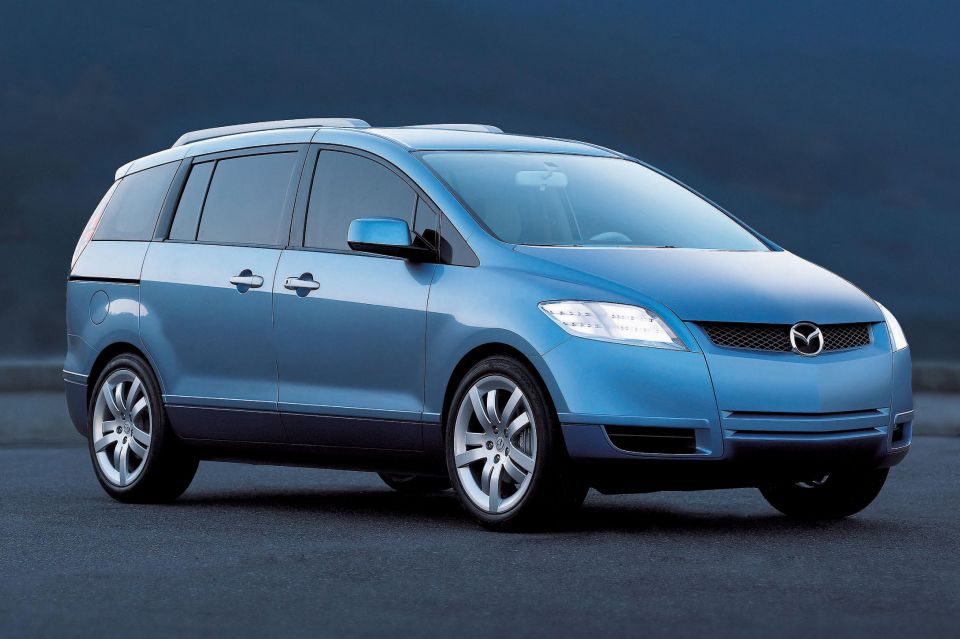
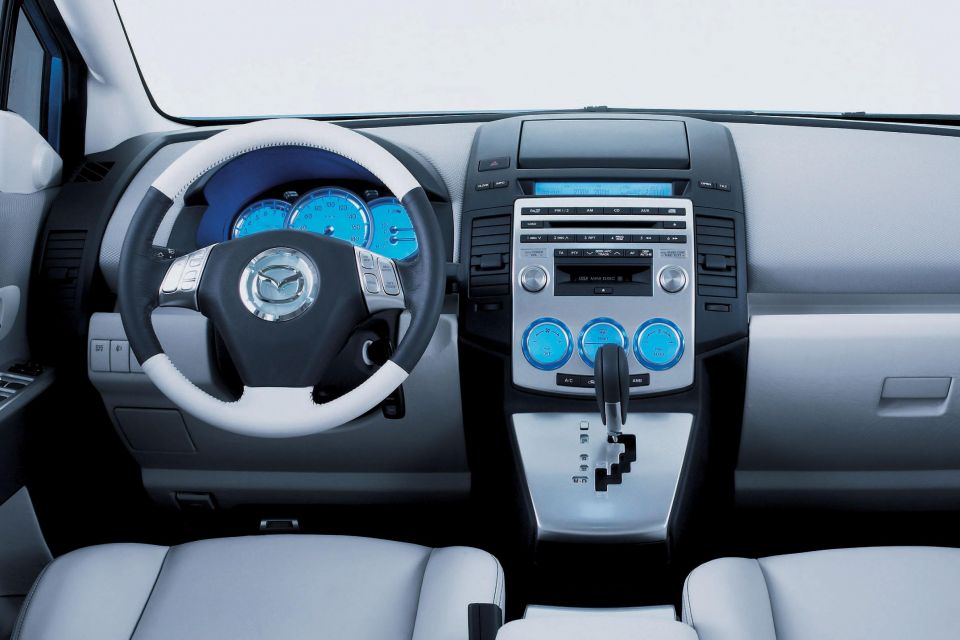
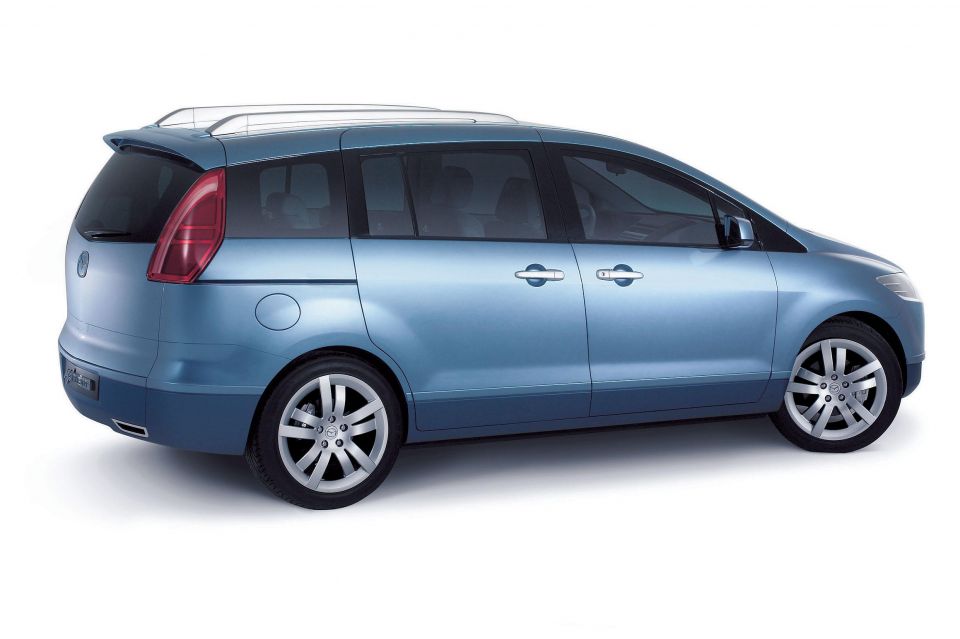
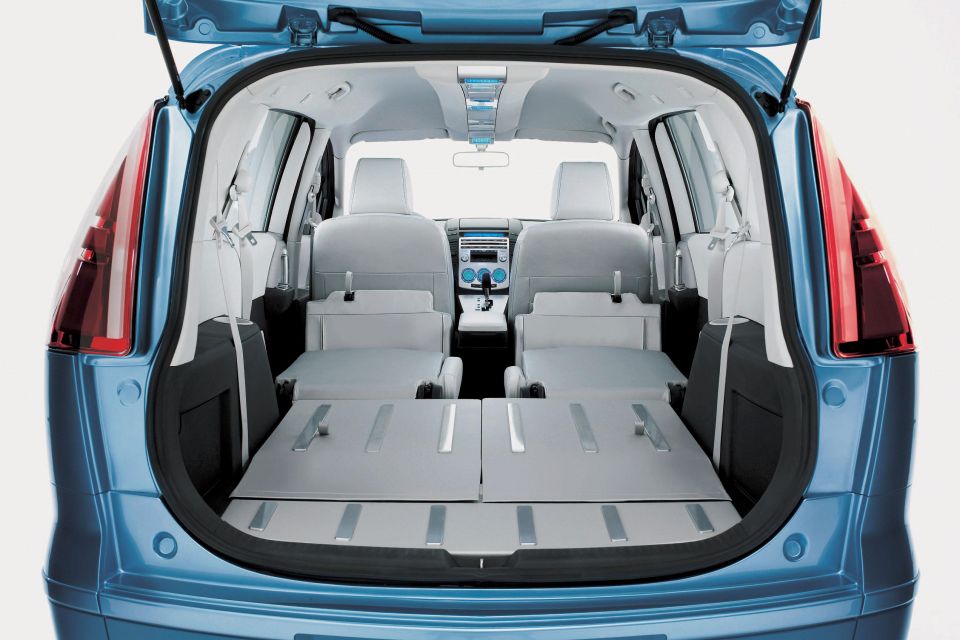
The 2004 MX-Flexa concept showed the Premacy’s replacement would fully embrace its role as a people mover, and adopt sliding rear doors.
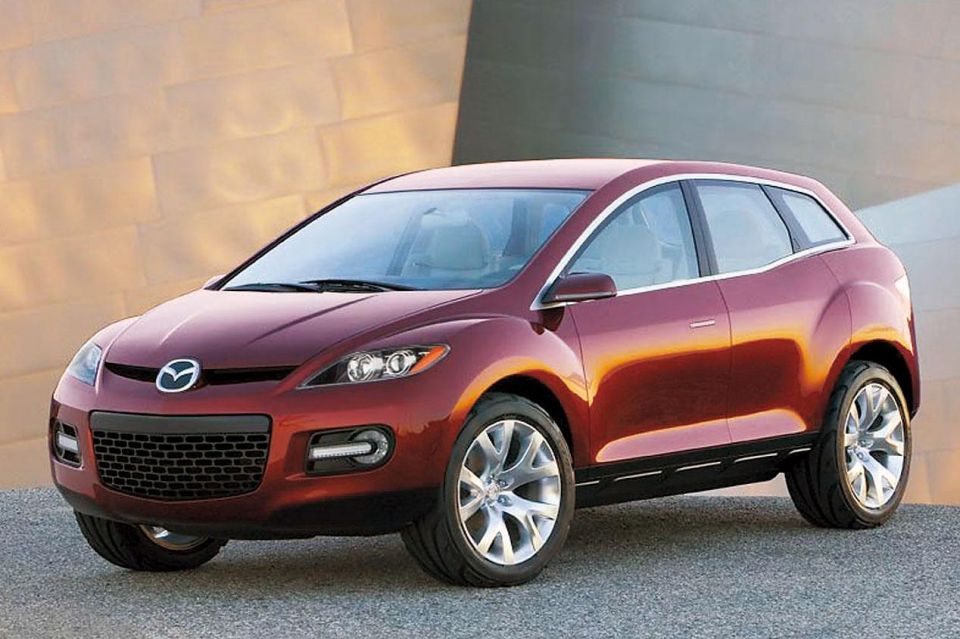
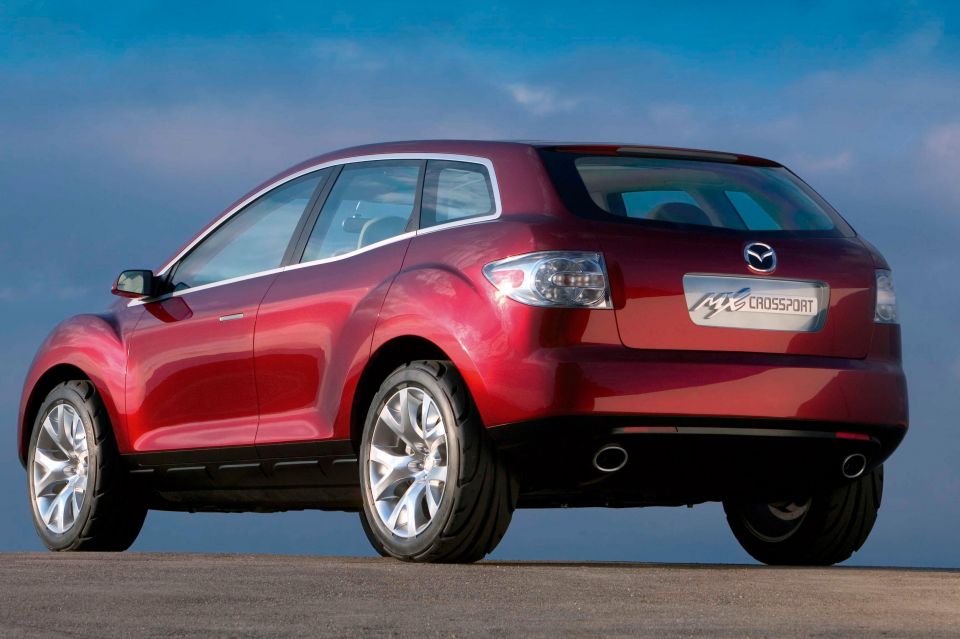

The 2005 MX-Crossport made its debut a year ahead of the CX-7, a new model sitting above the aging Tribute and with styling that was decidedely more crossover and less faux off-roader.
Available with a 2.3-litre turbocharged four-cylinder from the Mazda 3 MPS and 6 MPS, the CX-7 had good get up and go, but poor fuel economy.
What’s your favourite Mazda MX production and concept car? Let us know in the comments section below.
Where expert car reviews meet expert car buying – CarExpert gives you trusted advice, personalised service and real savings on your next new car.
Derek Fung would love to tell you about his multiple degrees, but he's too busy writing up some news right now. In his spare time Derek loves chasing automotive rabbits down the hole. Based in New York, New York, Derek loves to travel and is very much a window not an aisle person.


Andrew Maclean
5 Days Ago


Shane O'Donoghue
5 Days Ago


Anthony Crawford
4 Days Ago


Matt Campbell
3 Days Ago


James Wong
2 Days Ago


Max Davies
13 Hours Ago